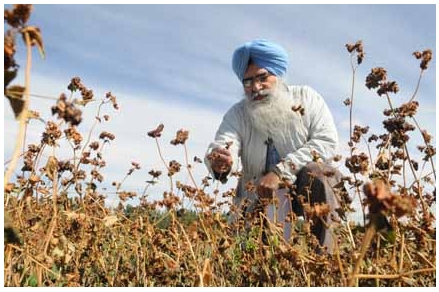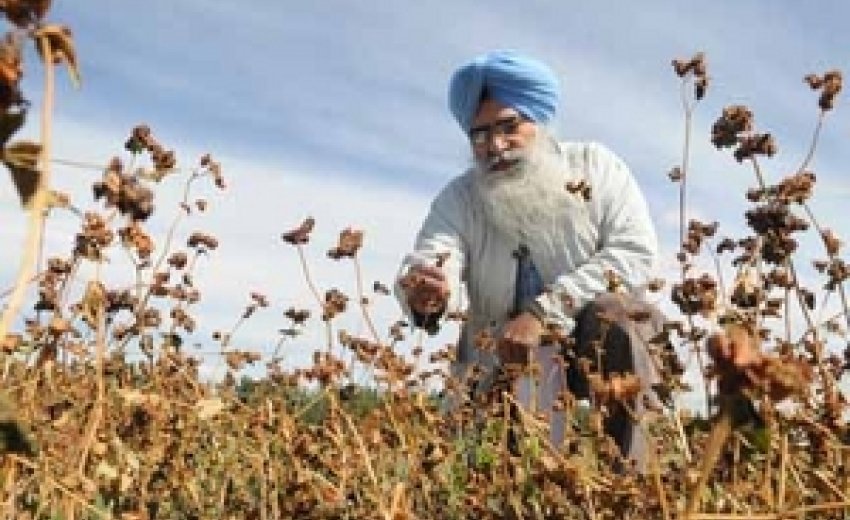 |
| Tarlok Singh Sahota of the Thunder Bay Agricultural Research Station checks on the buckwheat Monday. Buckwheat is part of a first-time experiment with cover crops at TBARS. A variety of plants are being used as a winter coverage crop that does not get harvested, but keeps soil rich with organic matter. Meanwhile, winter wheats research is making a comeback in the Thunder Bay area. (Brent Linton) |
Tuesday, September 25, 2012: Winter wheat is making a comeback in the Thunder Bay region.
Three Slate River Valley farms have seeded winter wheat in more than 100 acres of fields, Tarlok Singh Sahota of the Thunder Bay Agricultural Research Station (TBARS), said Monday.
It’s the first time in three or four years that winter wheat has been seeded, and it’s a good move for the region’s farmers, he said.
Winter wheat, Sahota said, is already matured during the time of year when wheat could be struck by sudden drought or heat, so it has a better chance of survival.
Spring wheat is still ripening when it tends to get hit by drought or heat, and as a result, the grain “will shrivel, they will not develop well,” he said.
“The grain size comes down, the grain yield comes down.”
Winter wheat, Sahota said, can produce a yield that’s 20 per cent greater than spring wheat.
Still, farmers in the region gave up on the product due to bad conditions a few years ago.
“The fields were not really good,” he said.
For example, one field was not properly drained and another needed a better rotation.
“It had been going wheat after wheat after wheat,” he said. “Rotation is required.
“If you only grow the same crop again and again, the yield will come down.”
Sahota said the fields at TBARS had a higher winter wheat yield that year than the farmers’ fields.
“More will take it up,” he said of winter wheat. “Change is a slow process.
“When the (current winter wheat farmers) succeed, then others will take it up.”
For more information, visit tbars.net.
